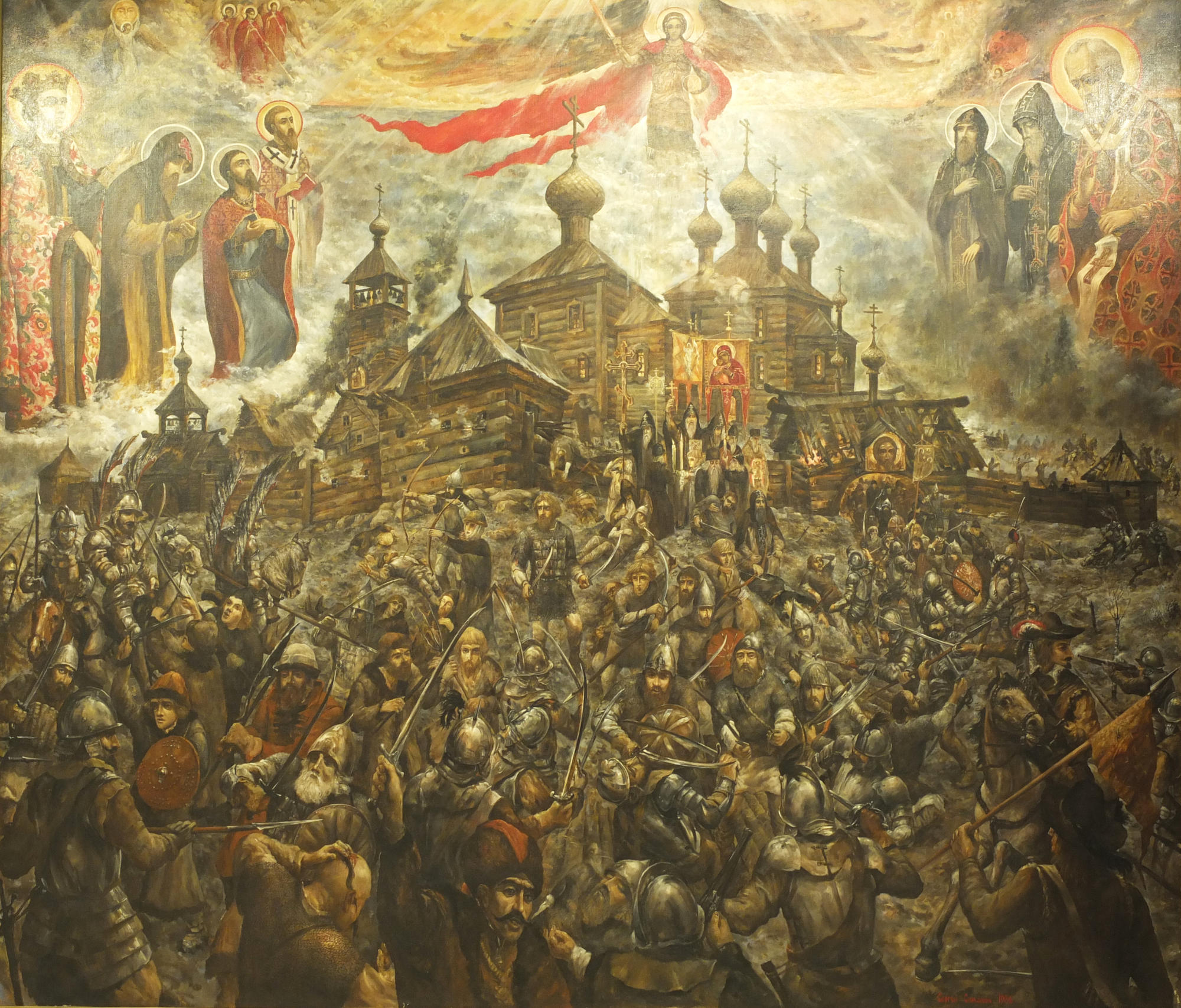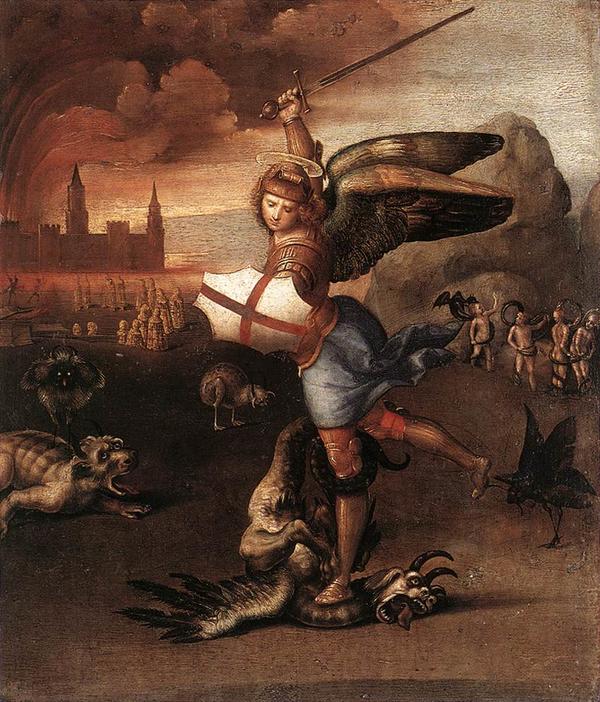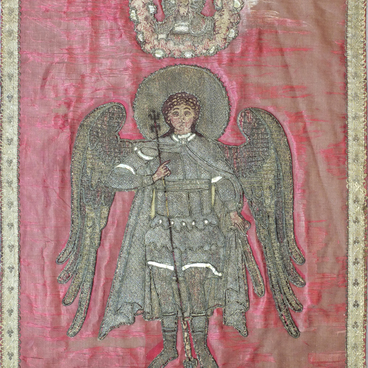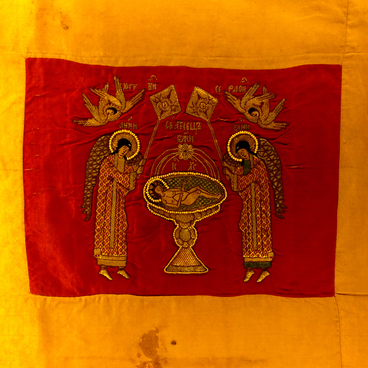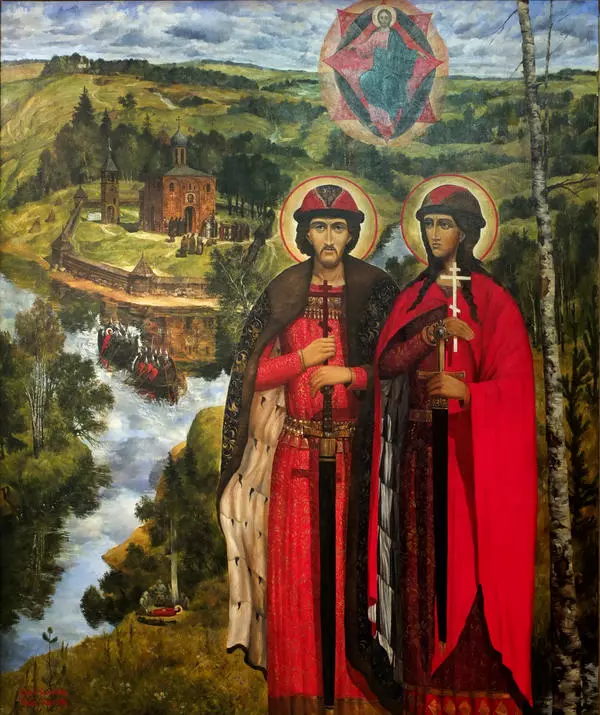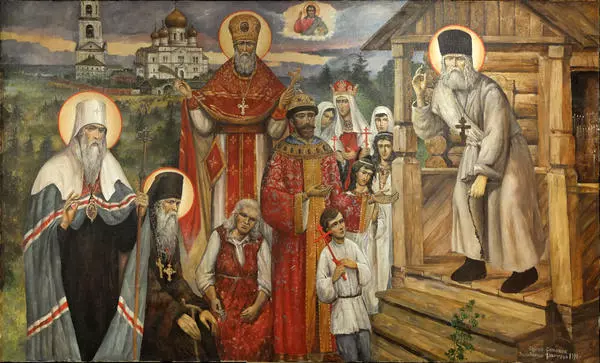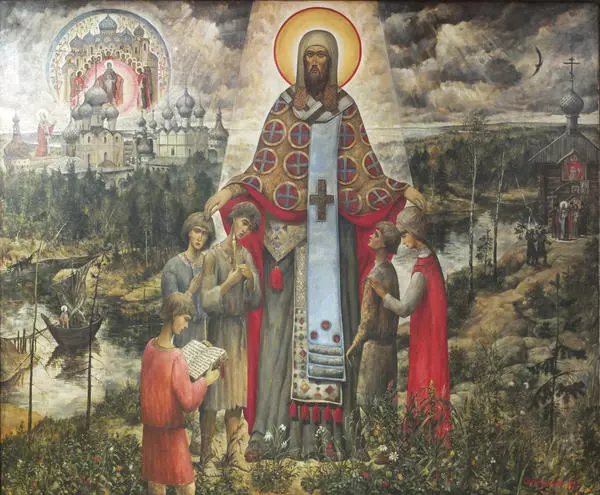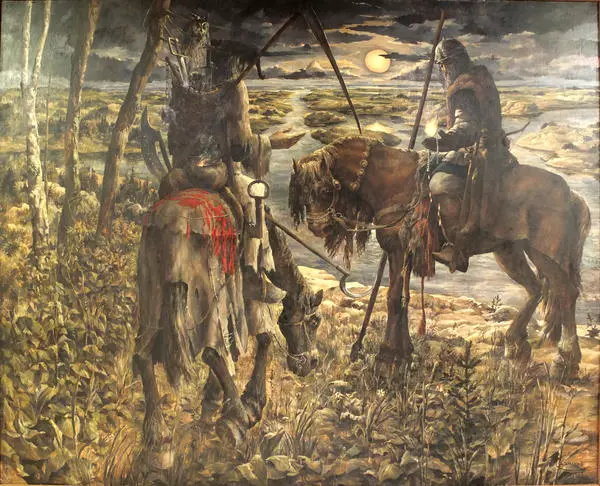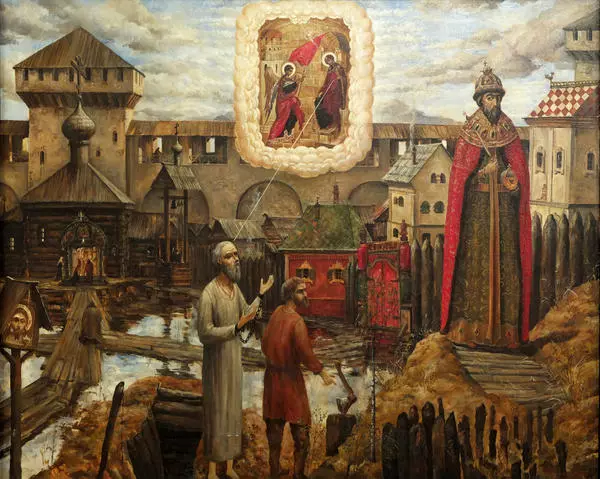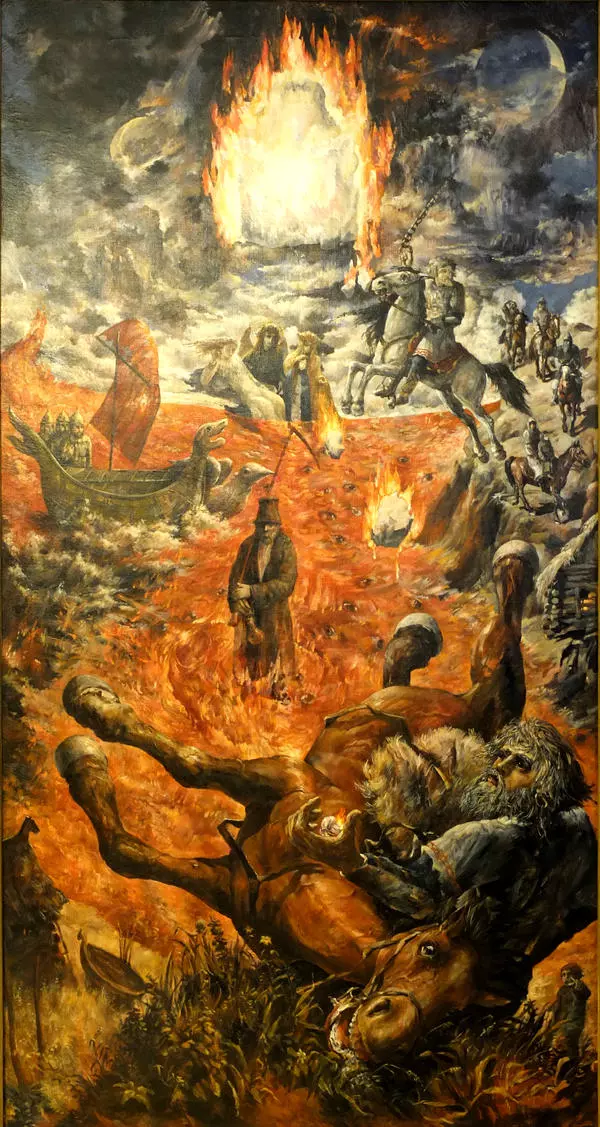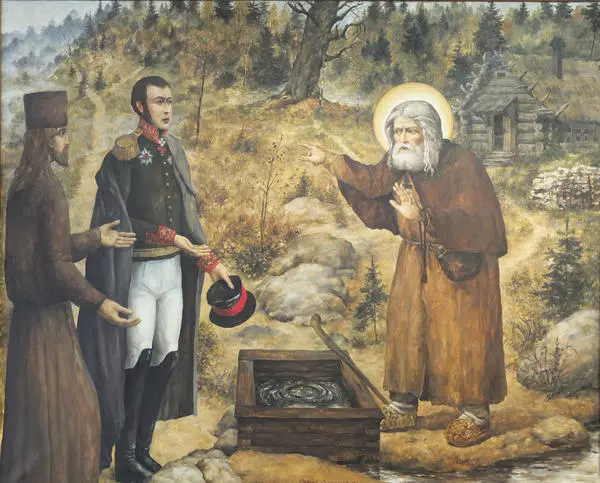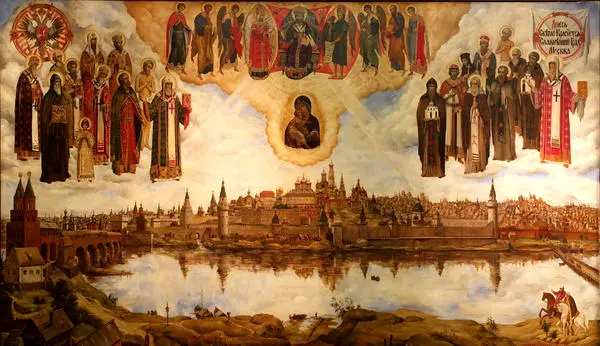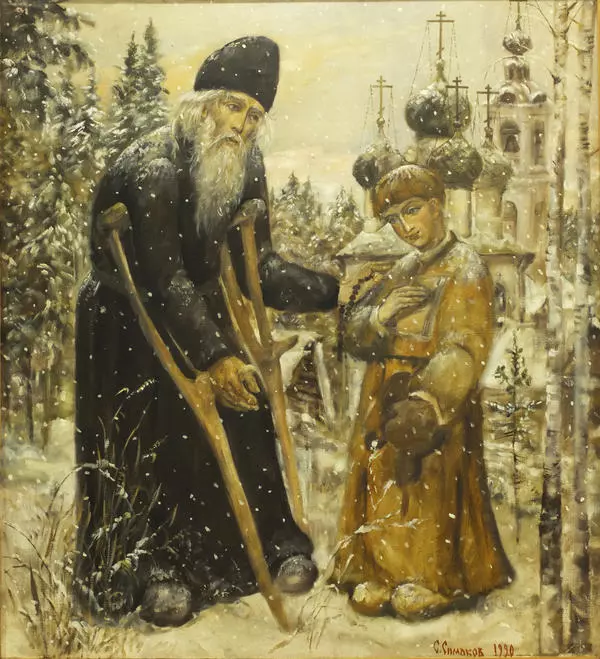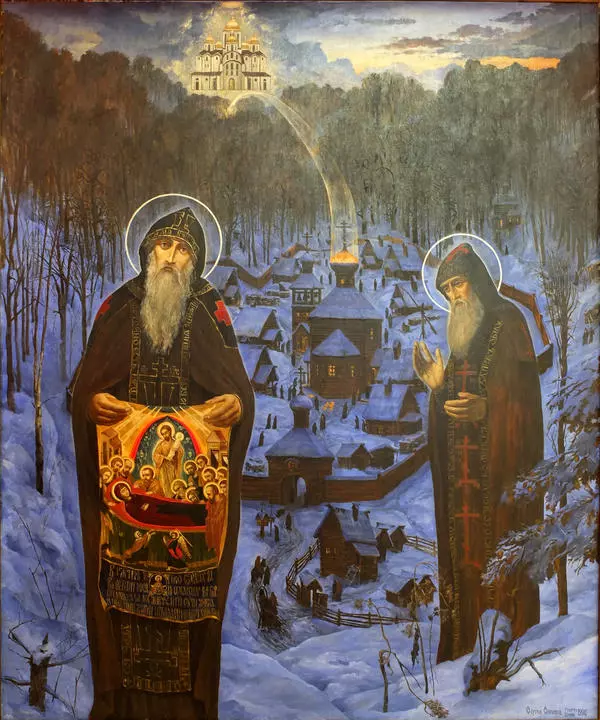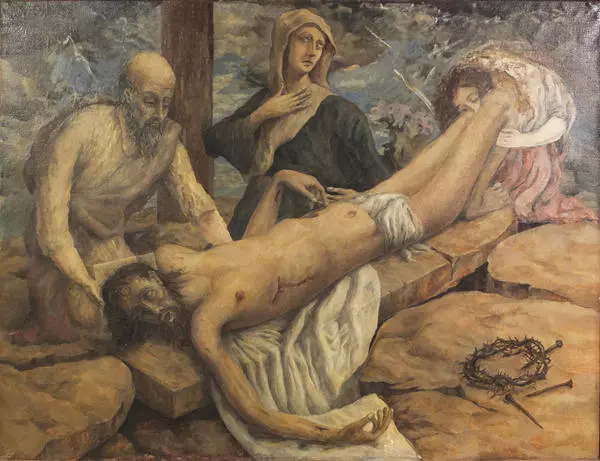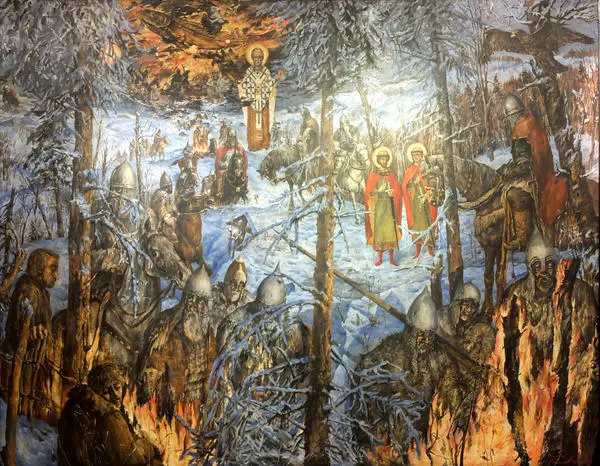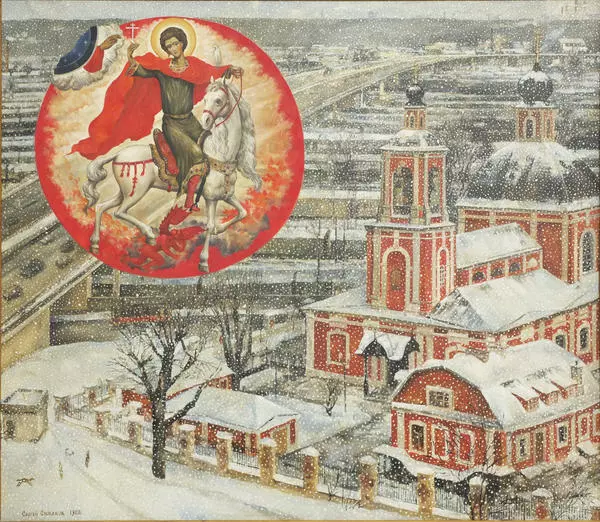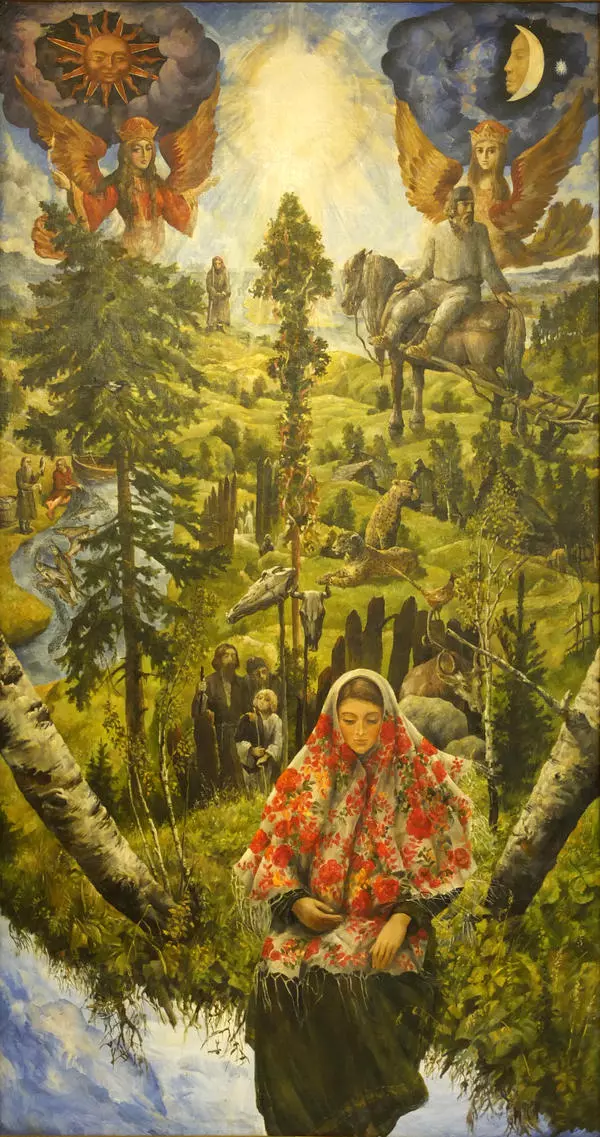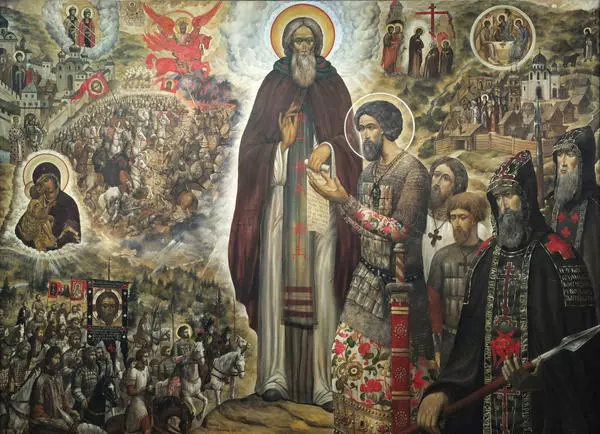The painting The Sack of Uglich by Sergei Simakov tells the story of one of the battles in the 1609-1618 Russian-Polish war, a key event during the Time of Troubles. By 1610, the Polish-Lithuanian troops arrived at Uglich and besieged the monastery of St. Michael In-the-Woods. A few days before Easter, on 4 April by the Julian Calendar, the invaders overwhelmed the resistance and burned the monastery down.
In his painting Simakov depicts the defence of the monastery. Central to the painting is the scene of a fierce battle: the elite Polish cavalry and Zaporozhye Cossacks are attacking Russian warriors and civilian residents who are guarding the retreat. The painter showed the confrontation in the traditions of battle painting: it is a large, dynamic and emotional work, with a diversity of accurate historical details.
Standing in front of the monastery, at the head of a small group of people, is Abbot Michael, putting a sign of cross over the Russian troops; next to him is a young man holding lit candles. Praying to God for victory are also local Uglich saints and the saints venerated across Russia: they are seen in poses of supplication against the background of the sky grey with clouds. To the left are Tsarevich Dmitry of Uglich, Venerable Cassian of Uchma, the Faithful Saint Prince Roman of Uglich and St. Leontius of Rostov. To the right are St. Nicholas of Mira, Venerable Paisius of Uglich and Venerable Bassian of Uglich.
In his painting Simakov depicts the defence of the monastery. Central to the painting is the scene of a fierce battle: the elite Polish cavalry and Zaporozhye Cossacks are attacking Russian warriors and civilian residents who are guarding the retreat. The painter showed the confrontation in the traditions of battle painting: it is a large, dynamic and emotional work, with a diversity of accurate historical details.
Standing in front of the monastery, at the head of a small group of people, is Abbot Michael, putting a sign of cross over the Russian troops; next to him is a young man holding lit candles. Praying to God for victory are also local Uglich saints and the saints venerated across Russia: they are seen in poses of supplication against the background of the sky grey with clouds. To the left are Tsarevich Dmitry of Uglich, Venerable Cassian of Uchma, the Faithful Saint Prince Roman of Uglich and St. Leontius of Rostov. To the right are St. Nicholas of Mira, Venerable Paisius of Uglich and Venerable Bassian of Uglich.
